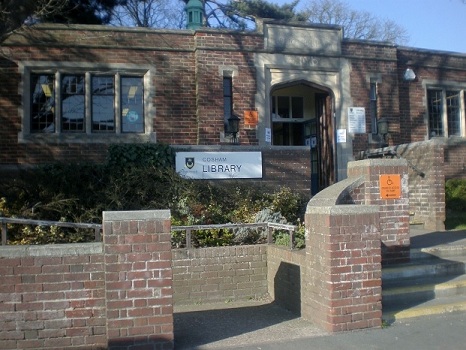By Tim Lambert
Early Cosham
Cosham started as a Saxon village in the 6th century. It was called Cossa’s ham, which meant Cossa’s village or estate. However, until the 19th century, Cosham was only a small village.
At the time of the Domesday Book in 1086 England was divided into areas called manors. Cosham was part of the manor of Wymering. At that time Wymering was a larger village than Cosham, which was a hamlet with a population of probably less than 100.
For centuries Cosham remained a little village and it was overshadowed by Wymering. In 1801 the population of Wymering and Cosham was only 556. By 1901 it had risen to over 1,200.
Nevertheless, Cosham was still a small village, known for its inns.
In 1847 a railway was built to Portsmouth and a railway station opened at Cosham. For the first time, it was possible to travel quickly and easily from Cosham and Portsmouth.
In 1881 a horse-drawn tram began to operate on rails between Portsmouth and the village of Cosham. Nevertheless, Cosham did not grow until the early 20th century.
In 1903 a tram called the Horndean Light Railway began running between Portsmouth and Horndean running through Cosham and then over Portsdown Hill. The trams were called green cars because they were emerald green and cream. For many Portsmouth people traveling to Horndean for a day in the summer was a big treat. However, the light railway closed in 1935 and was replaced by buses.
Modern Cosham
In 1920 the boundaries of Portsmouth were extended to include the village of Cosham north of Portsea Island and in 1932 to include Drayton and Farlington to the northeast. This area was growing rapidly and soon all these villages became suburbs of the growing city.
In 1934-36 Highbury estate was built south of Cosham. In the 1920s council houses were built at Wymering, west of Cosham. In the 1930’s many more council houses were built at Wymering.
Meanwhile, Queen Alexandra Hospital opened on the slopes of Portsdown Hill in 1908. Cosham Library
Modern Cosham
The Carlton Cinema was built in Cosham in 1934. It closed in 2007. In 1937 another cinema called the Ambassador was built in Cosham. It was renamed the Odeon in 1945 and it closed in 1976.
Meanwhile, St Philip’s Church in Cosham was built in 1937 by the famous architect Sir Ninian Comper (1864-1860).

After the Second World War, there was a desperate need for new houses. At first, the council erected prefabs. They were houses made in sections in factories that could be fitted together in a few days). Some were erected on bomb sites. Others were erected on Portsdown Hill above Cosham. More than 700 prefab houses were built in 1945-47.
Several new council estates were built in Portsmouth in the early 1970s. Among these was Portsdown Park, a mixture of flats and houses built on Portsdown Hill above Cosham. But Portsdown Park soon began to suffer dampness. Efforts to cure the damp failed and in 1987 the estate was demolished. It was replaced by private housing. Carlton Cinema was demolished in 2011.
Today Cosham is a flourishing community on the outskirts of Portsmouth.
My Youtube video about the history of Cosham